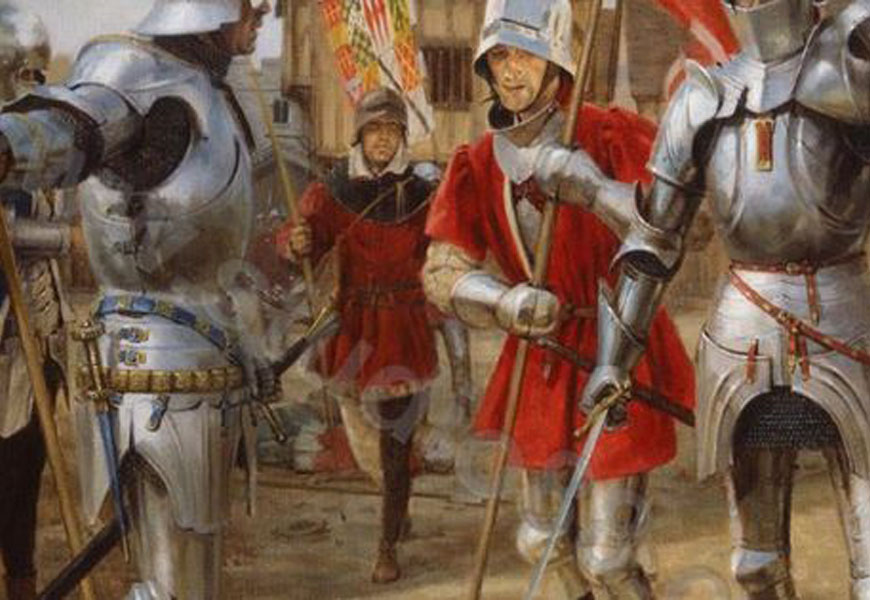

He was one of the lords York sent his letters to, in the hope that he could get them to Henry. He wasn’t the only one: the Duke of Norfolk and Lord Cromwell, both York’s supporters on paper at least, were also just too far away to make it to the battle.įauconberg being in the king’s party was quite useful. His sons-in-law, Thomas Stanley and Henry Fitzhugh, stayed well out of things, Fitzhugh (as he was to be up until Towton) in the king’s army and Stanley hovering somewhere in the ‘sorry, couldn’t get there in time’ zone. Salisbury’s brother Lord Fauconberg was as well, at least nominally. York’s son-in-law the Duke of Exeter was firmly on the other side. Now they were banding together for mutual protection. The previous year, Salisbury and Warwick had joined York in his first term as Protector and Defender largely because their interests coincided, rather than because the Nevills believed in York’s right to lead government. I’ve used the term ‘Yorkist’ here, but I’m not sure there was a Yorkist party before St Albans. They weren’t read by Henry or, if they were, he neither acknowledged them nor responded. The letters intended for the king got into the hands of his advisors well before the two parties met in St Albans. Much is made of the difficulties of mediaeval travel – poor roads, bad weather, time taken to cover distances – the letters written in Royston and, the next day, in Ware, certainly found their respective recipients in good time. I’ve yet to find an account, primary or secondary, that clearly places Thomas and John Nevill in the party, but it makes sense that they were there as well. York’s sons, Edward Earl of March and Edmund Earl of Rutland, were with them. York, the Earl of Salisbury and the Earl of Warwick were together in Royston on 20 May, and here they began a letter writing campaign to convince Henry VI of their loyalty and of the slanders made against them. The story begins with a message of warning, possibly from the Duke of Buckingham, advising the Duke of York that his main rival, the Duke of Somerset, had been holding secret meetings in London with a view to orchestrating the downfall of York and the Nevills at the upcoming parliament in Leicester. Burley, Elliot & Watson’s, The Battles of St Albans is also a very useful book. Two other secondary sources that are particularly useful are CAJ Armstrong’s Politics and the Battle of St Albans, 1455 and Michael Hicks’s Propaganda and the First Battle of St Albans, 1455. These last two, and part of Whetehamstede’s Registrum, can be found in Andrew Boardman’s excellent The First Battle of St Albans 1455. It breaks off just before the battle begins, concentrating as it does on the several hours of parlay before the battle proper. The Fastolf Relation was probably written by a young pursuivant attached to the party of Mowbray Herald. The Dijon Relation is more balanced, coming as it did from a foreign observer. Abbot Whetehamstede’s account is decidedly hostile, which is understandable as the battle was fought on his doorstep. I didn’t keep the link after I printed what I needed. The Stow Relation (decidely pro-Yorkist) can be found among the Paston letters, but you’ll have to hunt. We know about St Albans from a number of sources, not all of them impartial. I really should have spread this over several days, announced a solemn and serious Countdown to St Albans, perhaps. More nobles stayed out of the battle than took part and, unlike Towton, no-one rushed to submit themselves to the new authority in England: York’s power proved illusory and transient. The aftermath – the extraordinary Parliamentary Pardon Warwick’s appointment as Captain of Calais York’s second protectorate – briefly shifted the balance of power from Henry VI and his supporters to the Duke of York and his. The build up to the battle – the convergence of the two parties on St Albans the steady stream of letters from York’s party to anyone they thought might read them the toing and froing of heralds – took up several days. The Earl of Warwick’s reputation was made. Yorkist propaganda got its first real work out. The battle itself, fought in the streets of St Albans, the royal standard raised then abandoned in the market square, lasted little over half an hour. Textiles & costumes of the late Middle Ages & early Modern times.The Nevill Guide to the Wars of the Roses.Medieval & Renaissance Material Culture.Christmas Special: Dakota FitzPercy & the Font of Fate, Part 1.Some thoughts on disappeared documents….


Exemptions from the 1455 Act of Resumption.Looking at the precontract story from the correct standpoint.


 0 kommentar(er)
0 kommentar(er)
